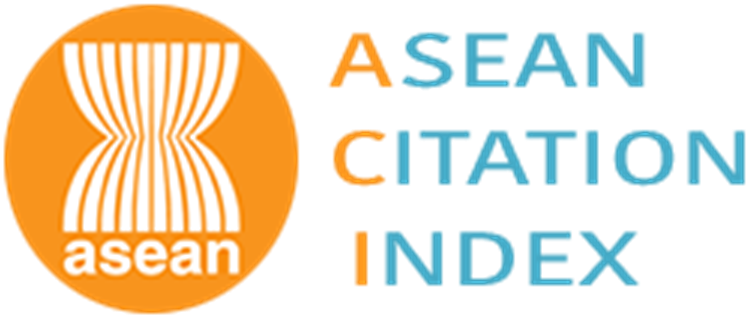ปัจจัยที่ส่งผลกระทบต่อการเปลี่ยนรูปแบบการเดินทางไปสู่ระบบรถไฟฟ้าชานเมือง: กรณีศึกษาพื้นที่ศาลายา ประเทศไทย
Factors Influencing Modal Shift to the Commuter Rail System: A Case Study of Salaya, Thailand
Abstract
งานวิจัยนี้เป็นการศึกษาพฤติกรรมการเลือกรูปแบบการเดินทางของผู้เดินทางระหว่างศาลายาและกรุงเทพมหานคร โดยได้พัฒนาแบบจำลองการเลือกจากทฤษฎีอรรถประโยชน์แบบสุ่มเพื่อประเมินผลกระทบของปัจจัยต่างๆ ที่มีต่อการตัดสินใจของผู้เดินทางการออกแบบแบบสอบถามใช้วิธีสถานการณ์สมมติเพื่อสร้างรูปแบบปัจจัยการบริการที่มีศักยภาพในการดึงดูดผู้เดินทางให้มาใช้รถไฟสายสีแดงอ่อนในอนาคตการศึกษาได้สร้างและปรับเทียบแบบจำลองโลจิตพหุนามสองรูปแบบโดยแยกตามข้อมูลการครอบครองรถยนต์ กลุ่มตัวอย่างในการสำรวจเป็นผู้ตอบแบบสอบถามจำนวน 444 คนจากพื้นที่ศึกษา แบบจำลองที่ปรับเทียบแล้วมีความถูกต้องและสามารถพยากรณ์สัดส่วนการใช้รถไฟในอนาคต มูลค่าของเวลาการเดินทางสำหรับผู้ที่เป็นเจ้าของรถยนต์ส่วนตัวมีค่าเท่ากับ 69.24 บาทต่อชั่วโมง ซึ่งต่ำกว่ามูลค่าเวลาของเวลาการเดินทางของผู้ที่ไม่มีรถยนต์ส่วนตัวซึ่งเท่ากับ 113.02 บาทต่อชั่วโมง มูลค่าของเวลาเดินทางนี้อาจเป็นผลมาจากปัจจัยด้านเศรษฐกิจสังคมและด้านการเดินทางอื่นๆ เช่น รายได้ อาชีพ เวลาเดินทาง และวัตถุประสงค์การเดินทาง ความยืดหยุ่นอุปสงค์ทางตรงแสดงให้เห็นว่า เวลาในการเดินทางนี้มีผลต่อการเลือกรูปแบบการเดินทางมากกว่าค่าใช้จ่ายในการเดินทาง อย่างไรก็ตามเวลาในการเดินทางจะมีผลกระทบน้อยลงเมื่อมีการครอบครองรถยนต์มากขึ้น การศึกษานี้พบว่า อิทธิพลของเวลาในการเดินทางนี้จะลดลงเมื่อผู้เดินทางเป็นเจ้าของรถยนต์ การครอบครองรถยนต์นี้เป็นอุปสรรคในการเปลี่ยนไปใช้รูปแบบการเดินทางอื่นที่มีอยู่ คาดการณ์ว่าถ้ารถไฟสายสีแดงอ่อนใช้เวลา 55 นาทีและคิดค่าโดยสาร 60 บาทในการเดินทางระหว่างศาลายาและกรุงเทพฯ จะมีส่วนแบ่งตลาดถึง 41.5% ผลของการศึกษานี้ทำให้สามารถกำหนดนโยบายการดำเนินงานสำหรับรถไฟฟ้าสายสีแดงอ่อนเพื่อให้มีสัดส่วนผู้ใช้มากขึ้นและส่งเสริมรูปแบบการเดินทางที่ยั่งยืน
This research addresses the mode choice behavior for commuters traveling between Salaya and Bangkok. The choice model was developed based on utility theory to evaluate the effects of attributes on commuters’ decisions. To design the questionnaire survey, Stated Preference approach was practiced by creating hypothetical scenarios of attributes for potential commuters of the future SRT Light Red line. Two multinomial logit models were created and calibrated based on individuals’ private car ownership status. Altogether, 444 participants completed the questionnaire from the study area. Calibrated models were accurate and were able to forecast the future rail mode share. The value of travel time of private car owners was 69.24 THB/hour, compared with 113.02 THB/hour for those without private cars. This might have been attributed to other socioeconomic and trip characteristics such as income, profession, time of day, and trip purpose, which should be further investigated. Direct demand elasticity revealed that travel time was more influential in mode choice than travel cost for the overall population. However, sensitivity of travel time was found to decrease with an increase in ownership of private cars. Moreover, an increase in car ownership was found to be a barrier to shift to other available modes. It was expected that if the Light Red Line’s traveling time took 55 minute with the fare of 60 baht between Salaya and Bangkok, the company would reach 41.5% market share. The outcomes allowed the company to develop operational policies for the Light Red line to enhance its mode share and promote sustainable commuting options.
Keywords
[1] Kocks, “Bangkok Transportation Study,” Rhein- Ruhr-Ing.-Gmbh Consulting Eng, Sep. 1975.
[2] K. Pianuan, M. Santikarn Kaosa-ard, and P. Pienchob, “Bangkok traffic congestion: Is there a solution?,” TDRI Quarterly Review, vol. 9, no. 2, pp. 20–23, 1994 (in Thai).
[3] M. Verougstraete and I. Enders. (2014, March). Traffic demand risk: The case of Bangkok’s skytrain (BTS). UNESCAP. Bangkok, Thailand [Online] (in Thai). Available: https://www.unescap. org/sites/default/files/Case%201%20_Traffic %20Demand_%20Bangkok%20BTS.pdf
[4] P. Kunadhamraks. (2015). Thailand’s transport infrastructure development strategy 2015– 2022. [Online] (in Thai). Available: http://www. bccthai.com/asp/view_doc.asp?DocCID=2743
[5] G. Cookson and B. Pishue. (2017, February). INRIX global traffic scorecard – Appendices. INRIX research. [Online]. Available: https:// www.verkeerskunde.nl/Uploads/2017/2/ INRIX--2016--Global-Traffic-Scorecard-Report- Appendices---English-FINAL.PDF
[6] D. Dissanayake and T. Morikawa, “Investigating household vehicle ownership, mode choice and trip sharing decisions using a combined revealed preference/stated preference nested logit model: Case study in Bangkok Metropolitan Region,” Journal of Transport Geography, vol. 18, no. 3, pp. 402–410, 2010.
[7] G.-M. Miletić, S. Gašparović, and T. Carić, “Analysis of socio-spatial differentiation in transport mode choice preferences,” Promet – Traffic & Transportation, vol. 29, no. 2, pp. 233–242, 2017.
[8] A. V. Sohoni, M. Thomas, and K. V. K. Rao, “Mode shift behavior of commuters due to the introduction of new rail transit mode,” in Transportation Research Procedia, 2017, pp. 2603–2618.
[9] C. Roma´n, R. Espino, and J. C. Martı´n, “Competition of high-speed train with air transport: The case of Madrid–Barcelona,” Journal of Air Transport Management, vol. 13, no. 5, pp. 277–284, 2007.
[10] Q. Shen, P. Chen, and H. Pan, “Factors affecting car ownership and mode choice in rail transit-supported suburbs of a large Chinese city,” Transportation Research Part A: Policy and Practice, vol. 94, pp. 31–44, 2016.
[11] T. J. DeMaio and A. Landreth, “Do different cognitive interview techniques produce different results,” in Methods for Testing and Evaluating Survey Questionnaires, 2004, pp. 89–108.
[12] R. M. Groves, F. J. Fowler, M. P. Couper, J. M. Lepkowski, E. Singer, and R. Tourangeau, “Survey Methodology,” in Survey Research Methods & Sampling, 2nd ed. New Jersey, 2009.
[13] A. Fraszczyk, W. Weerawat, and P. Kirawanich, “Commuters’ willingness to shift to metro: A case study of salaya, Thailand,” Urban Rail Transit, vol. 5, no. 4, pp. 240–253, 2019 (in Thai).
[14] E. P. Kroes and R. J. Sheldon, “Stated preference method,” Journal of Transport Economics and Policy, vol. 22, no. 1, pp. 11–25, 1988.
[15] J. J. Louviere, T. N. Flynn, and R. T. Carson, “Discrete choice experiments are not conjoint analysis,” Journal of Choice Modelling, vol. 3, no. 3, pp. 57–72, 2010.
[16] D. A. Hensher, J. M. Rose, and W. H. Greene, Applied Choice Analysis A Primer. Cambridge: Cambridge University Press, 2005.
[17] ChoiceMetrics. (2018, January). Ngene 1.2 user manual. [Online]. Available: http://www. choice-metrics.com/NgeneManual120.pdf
[18] City Population (2020, May). Salaya (Nakhon Pathom) Pop Statistics, Charts, Map, Location, Weather and Web Information. [Online] (in Thai). Available: https://www.citypopulation.de/
[19] S. Jarritthai and W. Techpeeraparnich, “Land use planning using transit oriented development concept: Case study: Salaya station,” presented at the International Conference of Global Network for Innovative Technology and AWAM International Conference in Civil Engineering, 2017.
[20] T. Yamane, Statistics, An Introductory Analysis. 2nd ed. New York: Harper and Row, 1976.
[21] J. H. McMillan, Educational Research: Fundamentals for the Consumer, 6th ed. London, England: Pearson, 2011.
[22] M. Ben-Akiva and S. R. Lerman, Discrete Choice Analysis, 7th ed. Cambridge: MIT Press, 1997.
[23] S. Siridhara, W. Paonoi, S. Meeyai, and V. Ratanavaraha, “Container transport mode choice analysis with a binary logit model case study: Northeastern Thailand,” Engineering and Applied Science Research, vol. 46, no. 3, pp. 256–266, 2019 (in Thai).
[24] L. C. Hsu and C. H. Wang, “Forecasting the output of integrated circuit industry using a grey model improved by the Bayesian analysis,” Technological Forecasting and Social Change, vol. 74, no. 6, pp. 843–853, 2007.
[25] L. A. Garrow, Discrete Choice Modelling and Air Travel Demand : Theory and Applications. Farnham, England: Ashgate Pub Ltd, 2010.
DOI: 10.14416/j.kmutnb.2022.08.005
ISSN: 2985-2145





